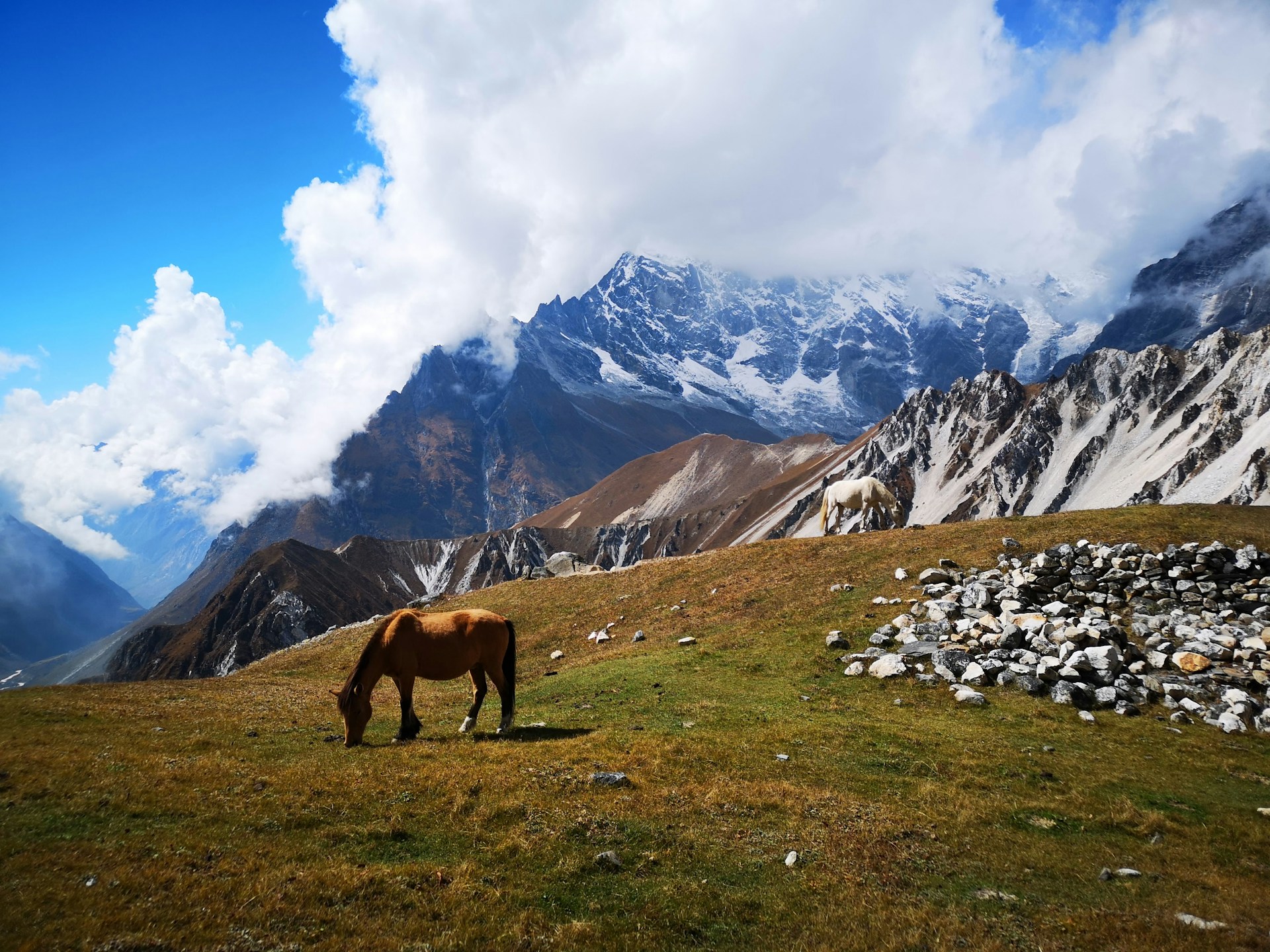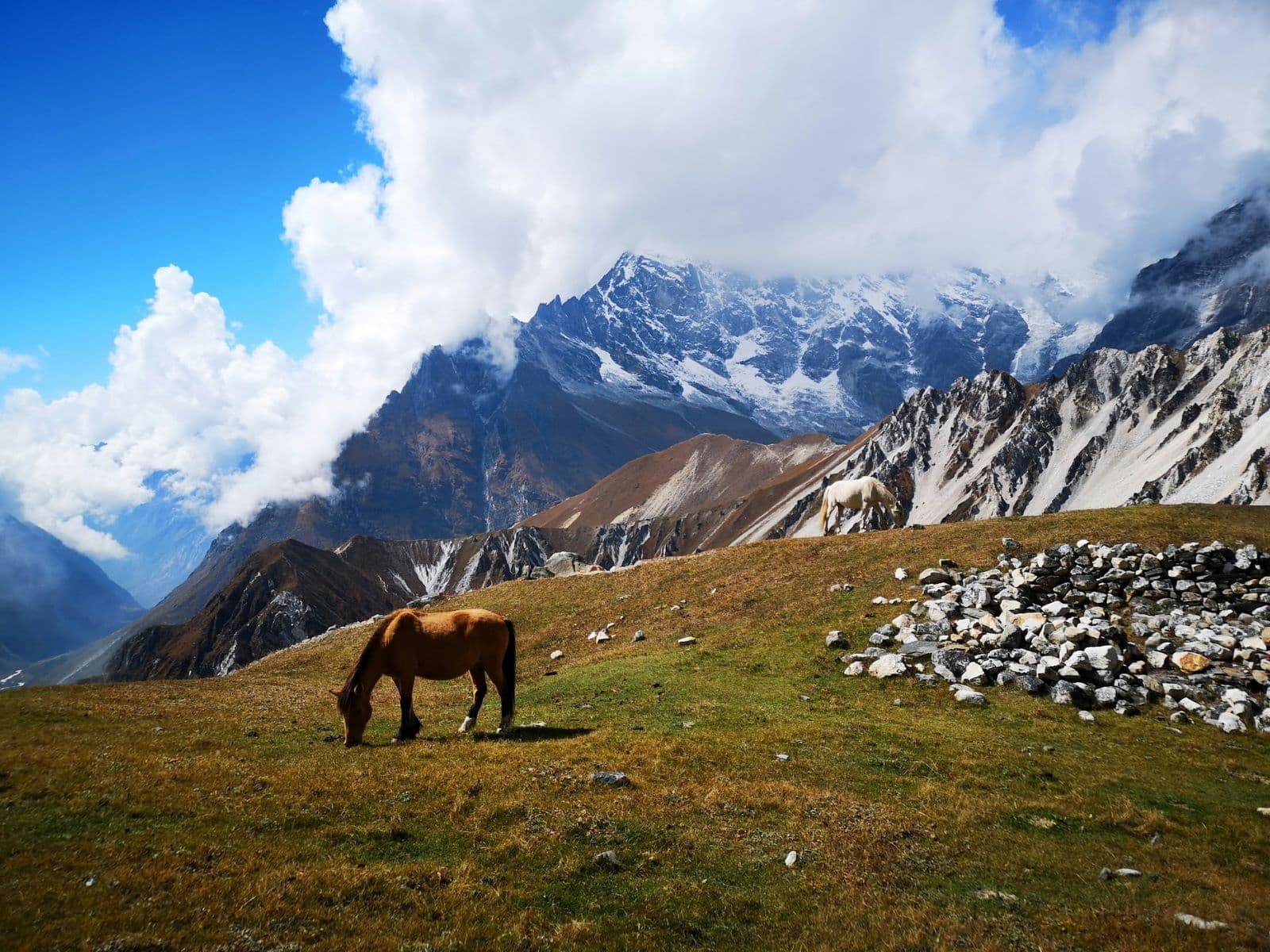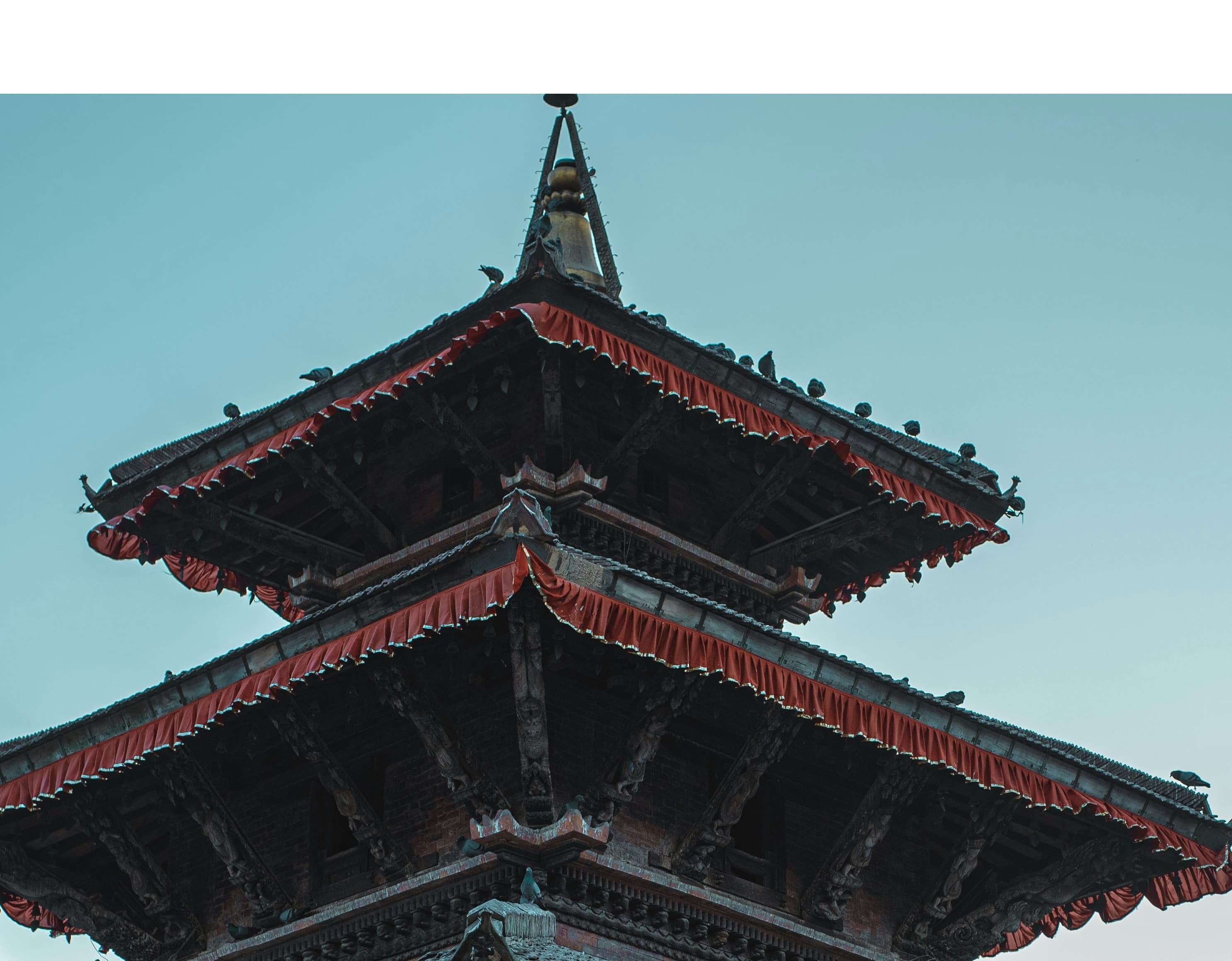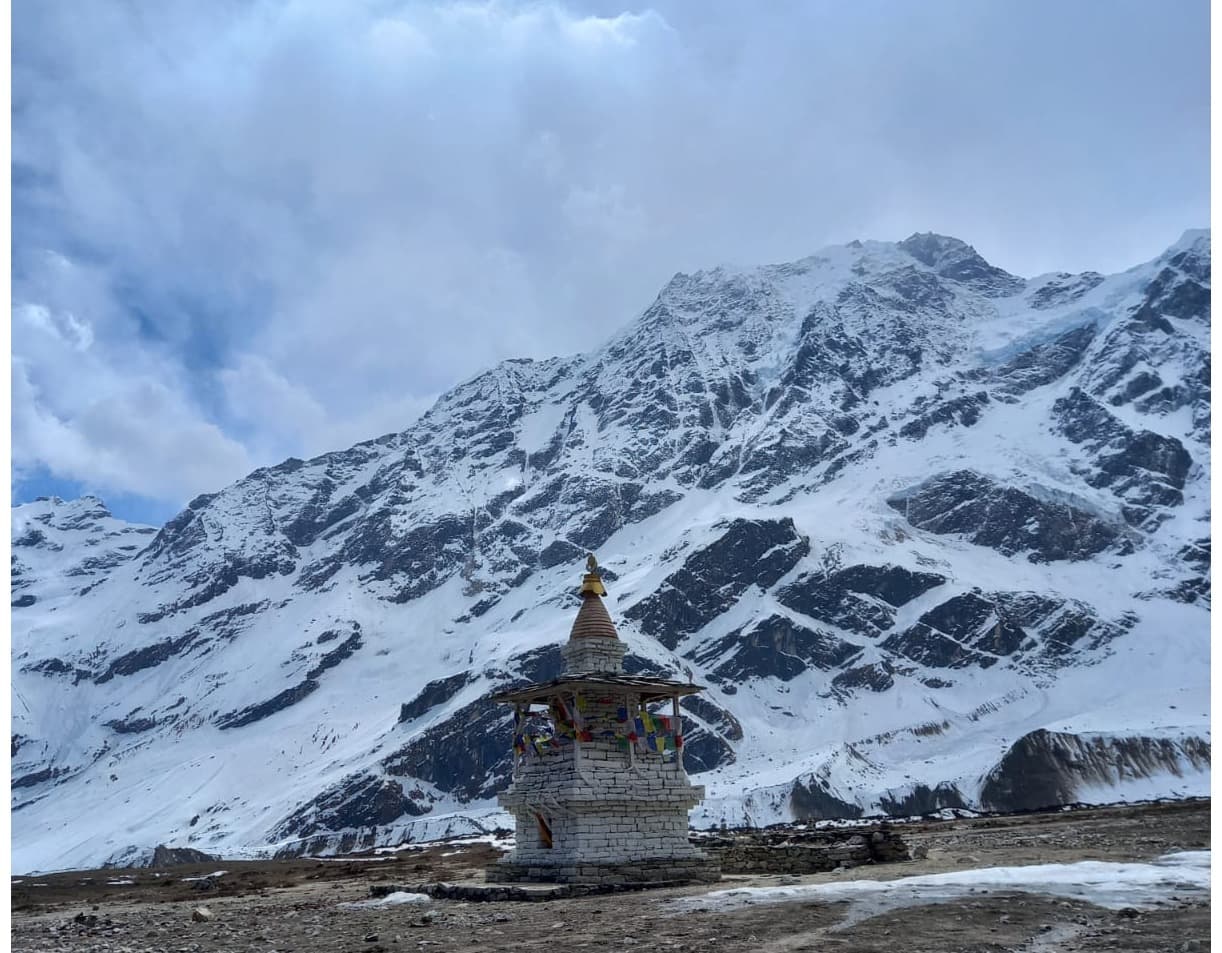Describe of Langtang Treks
The Langtang region unfurls as a tapestry of stunning vistas, encompassing serene hamlets, verdant alpine meadows, dense pine forests, and majestic mountain passes, all accessible from the vibrant streets of Kathmandu, seamlessly transitioning trekkers into the Himalayan serenity. Kyanjin Gompa emerges as the pivotal point of the Langtang Valley trek, serving not merely as its finale but as the springboard for diverse adventures. Here, trekkers ascend to Kyanjin Ri for breathtaking views, explore the Lirung Valley's glaciers, or tackle the challenging ascent to Tsergo Ri, with the most daring making their way to Yala Peak under the guidance of seasoned experts. The sacred Gosainkund Lake, venerated in Hindu lore, beckons pilgrims and adventurers, particularly during the luminescent August full moon, offering a journey that's as spiritually enriching as it is physically demanding. Beyond the allure of high-altitude treks, the Langtang region offers a glimpse into local life, especially through the Helambu and Tamang Heritage Trail, which delve deep into the culture of local communities, further enriched by tourism initiatives promoting homestays and cultural engagement. Accessibility is another hallmark of the Langtang region, with Kathmandu's proximity allowing trekkers to easily reach trailheads like Syabrubesi, making it Nepal's most accessible trekking destination.

Despite its popularity, Langtang retains its adventurous spirit, inviting explorers to venture beyond the beaten path into the Ganesh Himal range or deeper into the Langtang Valley, where the sense of solitude amidst the Himalayas is profound. Practical aspects such as the lack of need for special permits, aside from the TIMS card and national park fees, make trekking here straightforward, with the best seasons spanning from October to April, offering everything from the tranquility of winter trails to the vibrant hues of spring rhododendrons. Despite past natural adversities, Langtang's trails and lodges have been fully restored, ensuring a trekker's paradise. The ease of accessing this region from Kathmandu, coupled with the diversity of experiences from cultural immersion to the thrill of high-altitude adventures, cements Langtang as a treasured trekking destination for adventurers from across the globe.
Basic note about Langtang Treks:
We'll focus on highlighting the essential aspects that make the Langtang Valley Trek an unforgettable journey, blending natural beauty, cultural immersion, and accessible adventure. The Langtang region, near Kathmandu, is celebrated for its breathtaking mountain vistas, hidden cultures, and the serene Langtang Himalayas. The trek routes through less-trodden paths, offering a unique blend of nature and culture over a manageable period of 7 days.
What Sets Langtang Trek Apart in 2024/2025? - The Langtang Valley Trek stands out for its stunning peaks, diverse landscapes, and cultural richness. Highlights include the Langtang glacier, wildlife, restored villages, and the ancient Kyanjin Gompa. The trek offers an insight into the Tamang culture, supported by the backdrop of the majestic Langtang Lirung. The journey from Syabrubeshi to Kyanjin Gompa encompasses a variety of terrains and cultural experiences, making it a holistic trekking adventure.
Kyanjin Gompa and Langtang National Park: Centers of Cultural and Natural Beauty - At Kyanjin Gompa, trekkers can explore local monasteries, a cheese factory, and engage with the community, while Langtang National Park offers a rich biodiversity. These aspects contribute significantly to the trek's appeal, presenting an excellent opportunity for wildlife observation and cultural exchange.
Unmatched Natural Scenery and Authentic Accommodations - The trekking route promises spectacular views of the Himalayas, including Langtang Lirung and Ganesh Himal, coupled with authentic accommodation options that showcase the region's hospitality and traditional cuisine.
Cultural Immersion in Tamang Communities - A significant part of the trek's charm is the vibrant Tamang culture, with its distinct traditions, festivals like Sonam Lhochhar, and musical heritage. This cultural immersion is a cornerstone of the Langtang trekking experience.
Diverse Trekking Options and Family-Friendly Adventures - Langtang offers a range of treks suitable for various interests and fitness levels, including short treks and circuits around sacred lakes like Gosainkunda. The region is ideal for family trekking, thanks to its manageable trails and the short distance between teahouses.
Best Seasons and Guaranteed Success - The best times to embark on the Langtang trek are during the dry seasons, from October to May, with each season offering its unique advantages. The trek is designed to be a successful adventure for all participants, with flexible itineraries catering to different preferences.
The Ideal Trek for Beginners and Culture Enthusiasts- Conclusively, the Langtang Trek is a moderate, culturally enriching, and naturally splendid journey that is accessible within a week. It’s recommended for anyone looking to experience the Himalayas' beauty without the challenge of extreme altitudes, making it perfect for beginners and those interested in cultural exploration. The Nepal High Trek & Expedition team is ready to make your Langtang Valley Trek in 2024/2025 a memorable expedition.
Overall , The Langtang Valley Trek offers a less congested path compared to the bustling trails of Everest Base Camp or the Annapurna Circuit, presenting a prime opportunity to explore its beauty before it becomes widely recognized. Comfort is a staple here, with teahouses dotting each village, ensuring a restful night's sleep in cozy beds with blankets, alongside amenities like showers, delicious meals in a dining setting, and the convenience of charging electronics. Accessibility is straightforward, with the trailhead reachable by car, eliminating the need for costly internal flights. An essential part of the experience is spending at least three nights in Kyanjin Gompa. This allows for ample time to embark on treks to Kyanjin Ri and Tserko Ri, which stand out as the trek's most unforgettable highlights.
LANGTANG VALLEY TREK PACKING LIST:
For Langtang Valley Trek, need opted for a minimalist approach to packing, washing clothes regularly during the earlier, warmer parts of the journey. As the trek progressed into colder territories, the need for frequent outfit changes diminished, with warm clothing becoming a constant necessity in the chill of the teahouses, eliminating the need for multiple sets of attire.
Below is a practical packing list that served well, ensuring comfort without overburdening my backpack. Notably, carrying a sleeping bag wasn't necessary, as each guesthouse provided sufficient blankets, and my down jacket sufficed for extra warmth during the night.
- One pair of versatile pants, with a zip-off feature to convert into shorts
- A single pair of shorts
- A warm, thicker pair of trekking pants for cold days
- One quick-dry, long-sleeve shirt for layering
- A thermal long-sleeve shirt for added warmth
- Two short-sleeve t-shirts for warmer days
- Thermal underwear for cold nights
- Four pairs of quick-dry underwear, minimizing the need for daily washing
- A lightweight down jacket for evening chills
- A more robust down jacket for the coldest conditions, especially useful at higher altitudes
- A beanie and a cap to protect against sun and cold
- Sunglasses for eye protection against glare and UV rays
- A neck buff, versatile for warmth and dust protection
- A pair of gloves to keep hands warm
- Sturdy hiking boots for the varied terrain
- A headtorch, indispensable for early morning or late evening
- One pair of warm socks for the summit push
- Two to three pairs of regular socks for day-to-day trekking
- Sunscreen to protect against the strong sun
- Trekking poles to assist with balance and reduce strain on knees
- A water filter, ensuring access to safe drinking water
- A power bank to keep electronic devices charged
This packing list is tailored to balance warmth, functionality, and weight, ideal for the dynamic conditions of the Langtang Valley Trek.

Main FAQs
How long does the langtang trek take?
The duration of the Langtang trek typically ranges from 7 to 12 days, depending on the specific route taken and the pace of the trek. The most common itinerary is the Langtang Valley Trek, which usually takes about 7 to 9 days.
What are the treks in the Langtang region?
In the Langtang region, there are several treks including the Langtang Valley Trek, Langtang Gosainkunda Trek, Tamang Heritage Trail, and Helambu Circuit. Each trek offers a unique experience ranging from cultural insights to breathtaking Himalayan scenery.
Is Langtang trek difficult?
The difficulty level of the Langtang trek is generally considered moderate. While it does not require technical climbing skills, trekkers should be in good physical condition to handle daily walks of 5 to 7 hours over varied terrain. The highest point of the trek is Kyanjin Ri (4,773m/15,659ft) or Tserko Ri (4,984m/16,352ft), which involves a steep ascent.
Is Langtang open for trekking?
Langtang is open for trekking and has been welcoming trekkers since the region recovered from the devastating earthquake in 2015. The local communities have rebuilt the trails and lodges, making it possible for trekkers to explore the beauty of Langtang once again. Always check the latest travel advisories and local regulations before planning your trek, as conditions can change due to weather and other factors.
Key points of Langtang Treks:
The Langtang Valley Trek is renowned for its accessibility, moderate difficulty, and the stunning natural beauty it offers, set against the backdrop of the Himalayas near the Tibetan border. Here are the key points that highlight the essence of this popular trekking route:
-
Accessibility: Located just a day's drive from Kathmandu, the Langtang Valley Trek is one of the most accessible high-mountain treks in Nepal, eliminating the need for internal flights.
-
Duration: The trek can be completed in approximately 7 to 12 days, making it an excellent choice for those with limited time who still want to experience the majesty of the Himalayas.
-
Difficulty Level: It is considered a moderate trek, suitable for average fit persons. Some days may involve 5 to 7 hours of walking, but the elevation gain is gradual, reducing the risk of altitude sickness.
-
Scenic Beauty: Trekkers are treated to diverse landscapes, including bamboo forests, rhododendron woods, majestic waterfalls, and stunning views of snow-capped peaks like Langtang Lirung, Ganesh Himal, and others.
-
Cultural Experience: The trek offers a deep dive into the unique Tamang culture, heavily influenced by Tibetan Buddhism. This is evident in the monasteries, prayer wheels, and flags along the route.
-
Wildlife: The Langtang National Park, through which the trek passes, is home to various species of birds, deer, monkeys, and the elusive red panda, offering opportunities for wildlife watching.
-
Teahouse Trekking: The trail is dotted with teahouses, providing trekkers with comfortable lodging and meals throughout the journey, facilitating a light pack and a focus on the experience.
-
Highlights: Key highlights include the panoramic views from Tserko Ri, the spiritual experience at Kyanjin Gompa, and the opportunity to explore the Langtang glacier.
-
Recovery from the Earthquake: Following the devastating 2015 earthquake, the Langtang region has been rebuilt with improved trails and infrastructure, welcoming trekkers back to its trails.
-
Permits Required: Trekkers need to obtain a TIMS card and a Langtang National Park permit, both of which contribute to the conservation efforts and support local communities.
The Langtang Valley Trek offers an immersive experience that combines natural beauty, cultural richness, and adventure, making it a must-visit destination for trekkers around the world.



